The birth of a child is always a joy, so you want to give the baby the best and not forget about safety. And if all the items of "children's life" will come in handy a little later, then clothes will be needed from the first moments of life. In order to accurately protect the baby, you need to do everything yourself. Therefore, follow the following rule - we sew for newborns with our own hands, patterns of interesting things that you can "design" yourself. To do this, you need to accurately decide on high-quality fabric and a model of this or that version of the product.
What fabrics are best to use?
After you have already decided what to sew for a newborn with your own hands, you still need to select the appropriate textiles for this. The material must meet certain standards:
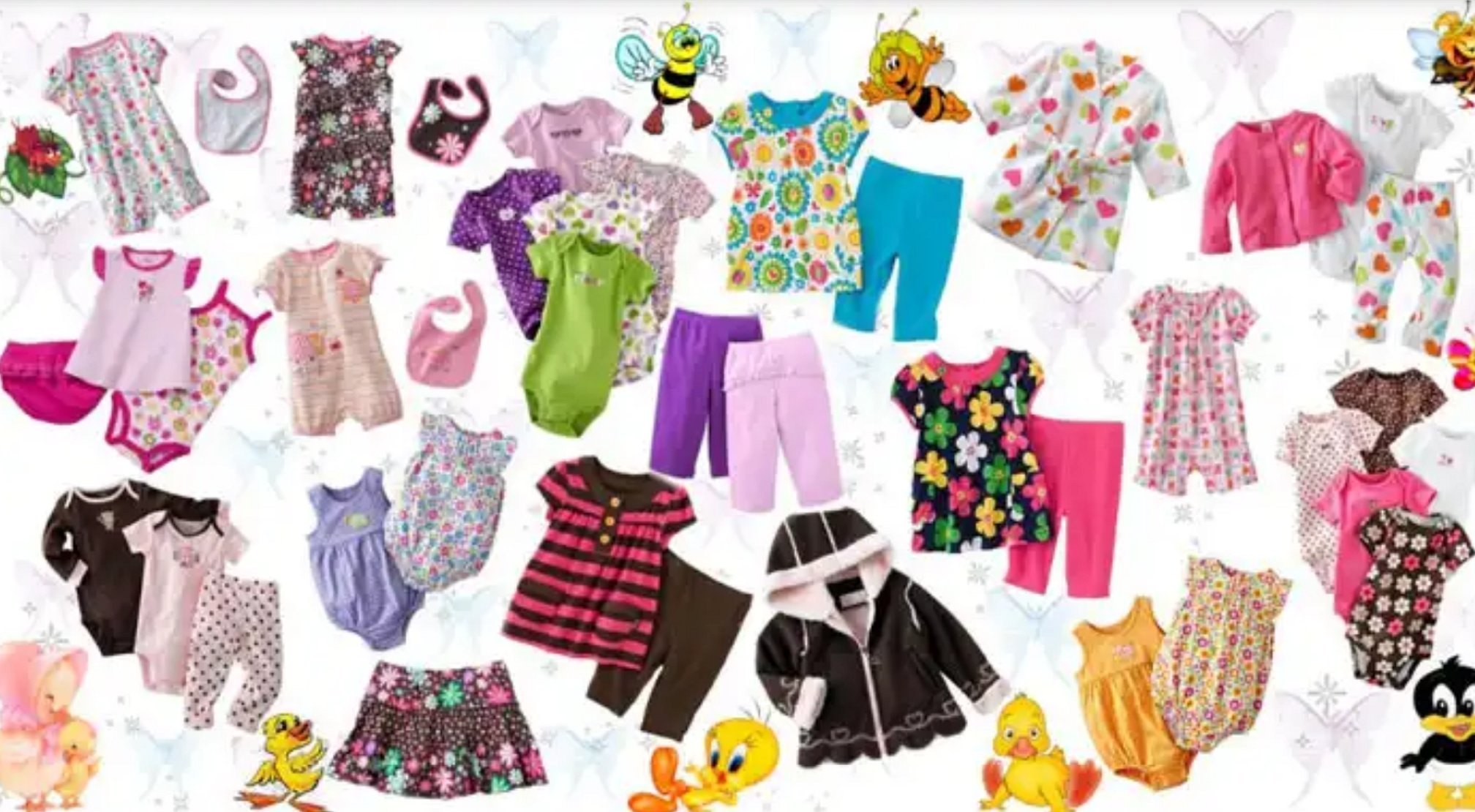
- Safety in terms of composition and hygiene.
- Durability that guarantees wear resistance.
- Comfort guaranteed by the pleasant surface texture.
- A high degree of hygroscopicity is required.
- Breathability so that the baby's skin can breathe and not get sweaty.
- It is better to avoid items that wrinkle during wear.
- The material should not fade during washing, as this procedure is carried out frequently.
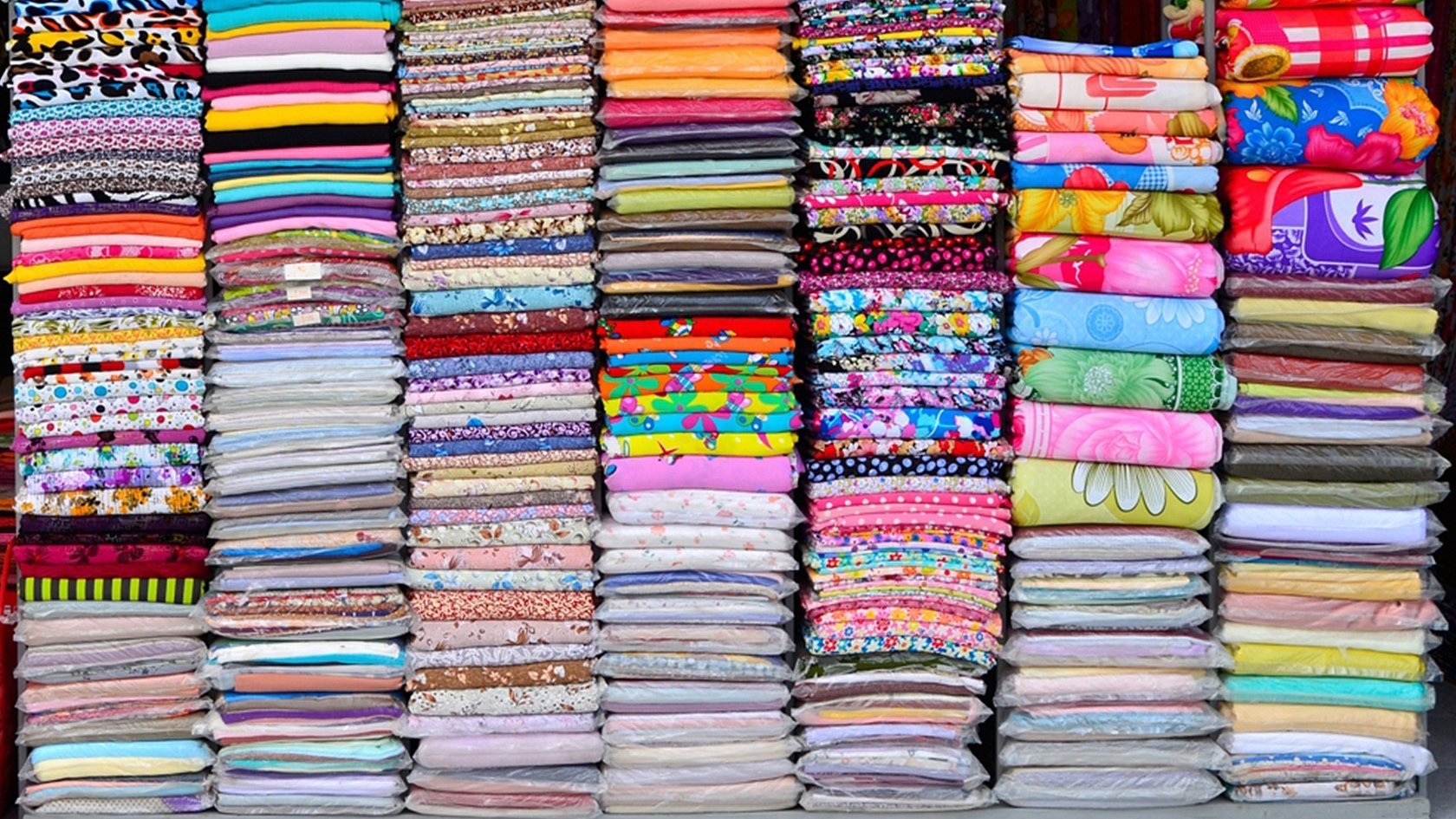
Additional information! When choosing a material, you must additionally consider the season for which it will be used.
There are many natural and synthetic textile options on the market. Many mothers are unsure which type to choose for sewing clothes for a newborn. Experienced seamstresses-mothers have come up with a precise rule - the closer the clothes are to the baby's body, the more natural their composition should be. There are several fabric options that are ideal for newborns:
- A very popular option is chintz - a fabric with a standard fiber weave. It is mainly used for sewing diapers and light summer clothing.
- Flannel is considered relevant, which is divided into subspecies: cotton, wool, semi-woolen. It is used for sewing demi-season undershirts, pajamas, overalls, crawlers and dressing gowns.
- Terry cloth is a lightweight and versatile material. It is pleasant to the touch, easy to care for, absorbs moisture well and warms. Suitable for diapers, towels, scratch mittens, bonnets.
- Knitted fabrics, which in turn are divided into footer, jersey, interlock, ribana, capiton. They are relevant in the manufacture of almost any things for a newborn.
- Fleece can be used to sew "outerwear". Blouses and overalls for walking, which will be worn over more natural clothing.
- Calico will become a rolling alternative to chintz, but it is mainly used to make bedroom accessories - a crib bumper, a sheet, a mattress cover.

There are other types of fabrics that are only ¼ or ½ natural fibres. Some of these can also be used to make clothes for newborns. The most popular are velour and polyester.
Determining children's sizes
In order for a pattern for a newborn to become a good basis for a future product, all parameters must not only correspond to reality, but also be suitable for the baby's body type.
There are several nuances to consider when taking measurements:
- The baby should be dressed in light, thin clothing.
- The measuring tape should not be pulled too tightly, otherwise the result will be clothing that is too tight to the body.
- Record all data immediately after measurement.
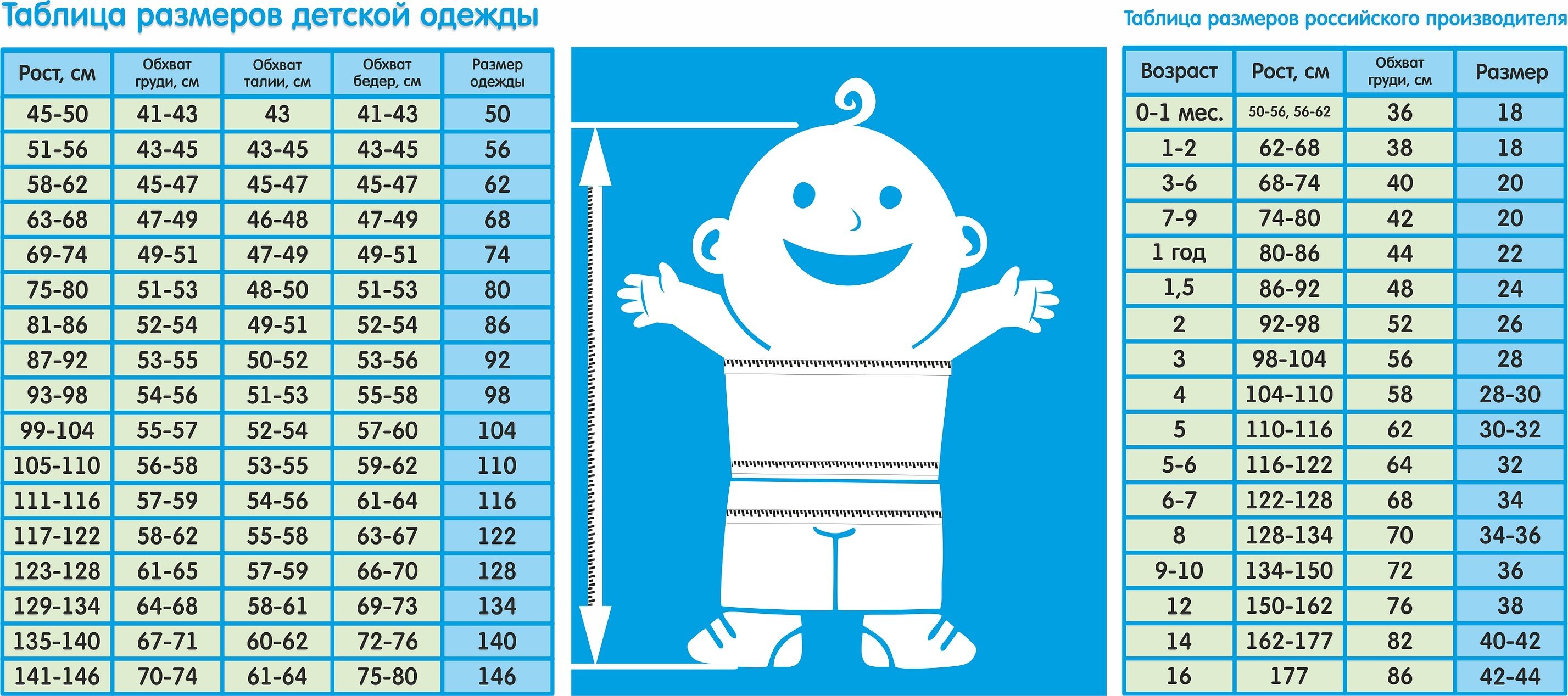
How to take measurements from a newborn:
- You need to determine your height - the length from heel to crown.
- Chest circumference - place the measuring tape so that it goes under the arms and rests on the shoulder blades.
- You need to use the tape to determine the waist diameter in the tummy area.
- Hip circumference - measure around the buttocks at the widest part.
- Back length - from the middle of the neck to the place where the waist measurement was made.
- Arm length - from shoulder to wrist when bent.
- Neck circumference - wrap the measuring tape around this part of the body with a sufficiently large overlap.
- The length of the foot is from the tip of the big toe to the heel.
- Determine the length of the leg from the side - measure from the waist line to a certain level.
- Head circumference - place the tape so that it is located above the ears and lies on the eyebrows.
You need to learn how to take measurements correctly and know which parameters are especially important. If you do everything well, taking into account all the recommendations, then the item will be very comfortable for the baby.
According to these parameters, the size of clothes for newborns is determined. Comparison of data will help in this, it is enough to select a table with sizes that are relevant in the country:
How to sew clothes with your own hands
Previously, the Burda magazine was almost the only source of ideas. Now there are many more sources of information. Having found a suitable model, you can sew a lot of useful things for your baby - a basket-type carrier for a newborn, a scarf-sling for carrying the baby, a sleeping bag resembling a cocoon.
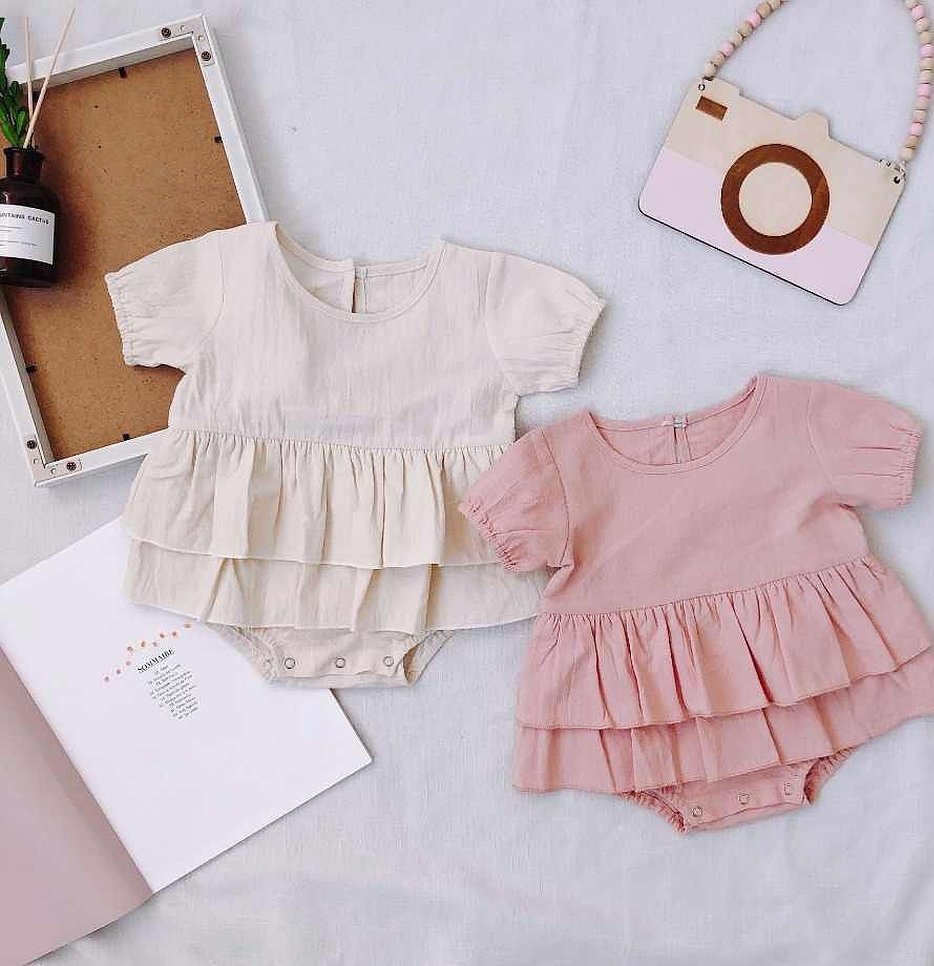
Therefore, it is quite easy to get ahead of what you can sew for a newborn with your own hands, but at first you can make the most necessary and simple things: undershirts, bonnets, rompers, scratch mittens, diapers. Thanks to such products, you can also equip a cradle. Patterns for newborns are much easier to make than for adults, so you do not need to worry about this.
Lightweight romper
A romper is an indispensable attribute of a newborn's wardrobe. You can sew such a product if you take measurements, namely the parameters of the torso.
Simple patterns for newborn clothes:
- Prepare such a pattern.
- Transfer the pattern onto the fabric and sew all the pieces together.
- Treat the seams to make them comfortable.
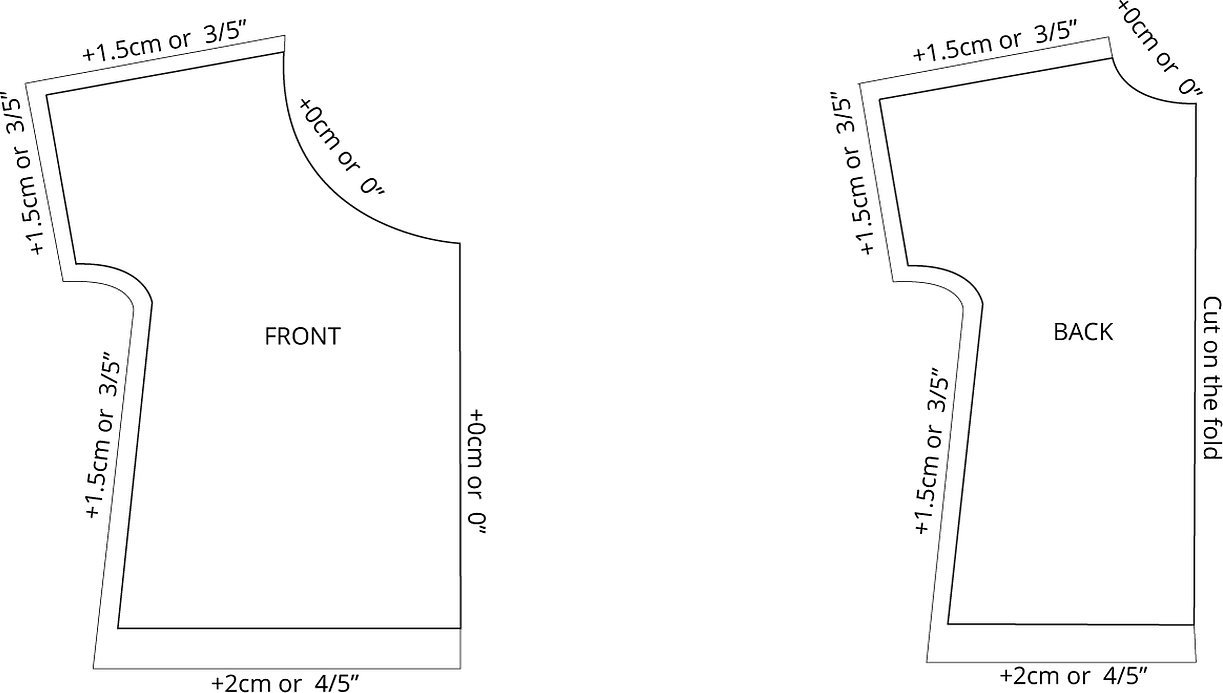
The child will feel comfortable if all the seams are external, not internal.
Cute little cap
Until the age of one, the baby's head must be kept warm, since the bones of the skull on the crown have not yet completely grown together. Therefore, it is important to make a headdress for the baby. To sew a bonnet, you need to prepare patterns for babies of this type:
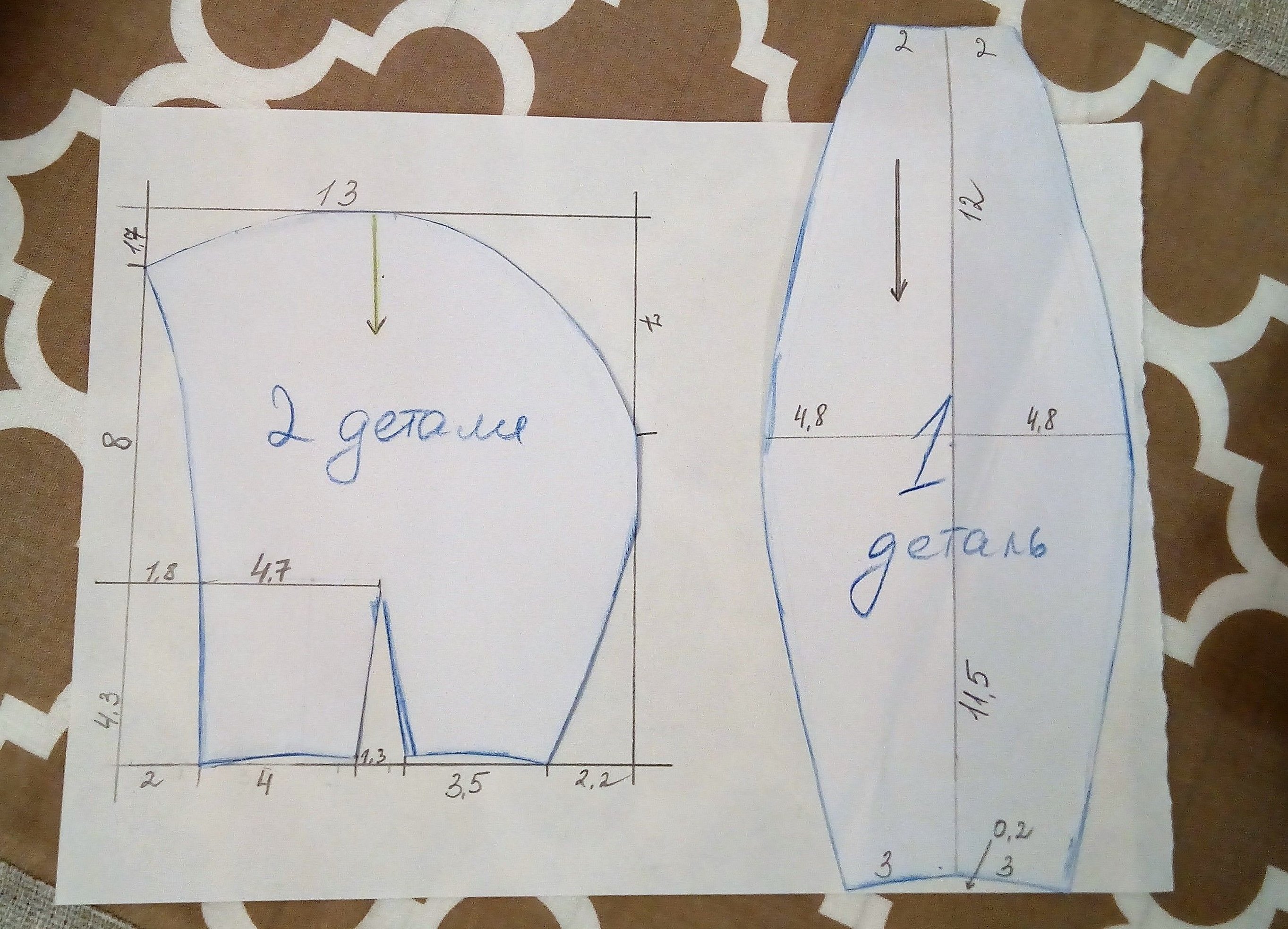
Using this option, it is easy to create a simple but comfortable headdress.
Envelope for baby
Discharge from the maternity hospital requires the presence of a mandatory attribute - an envelope for discharge. Such a thing is made according to the same principle as a corner diaper. But the dimensions of this version of the corner should be large - the side of the square is not less than 1.5 m.
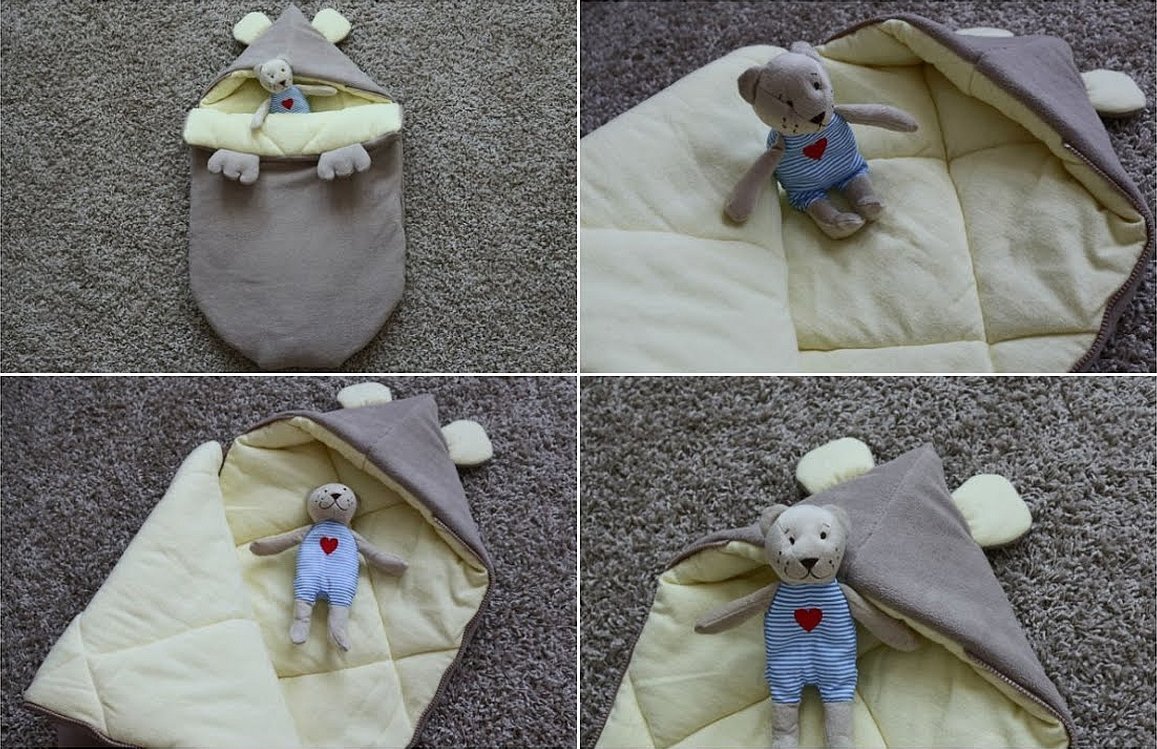
To make the thing more attractive, the metric for newborns can be recreated embroidery. You can specify the parameters of height, weight, date of birth time, weight. Any scheme can be used for execution.
Diapers
Diapers are the easiest to sew. You just need to cut out a square with a side of at least 1 m, preferably 1.1 m. The edges must be overcast on a sewing machine. You can make a corner diaper. Just fold 1 corner and sew it to the main fabric.
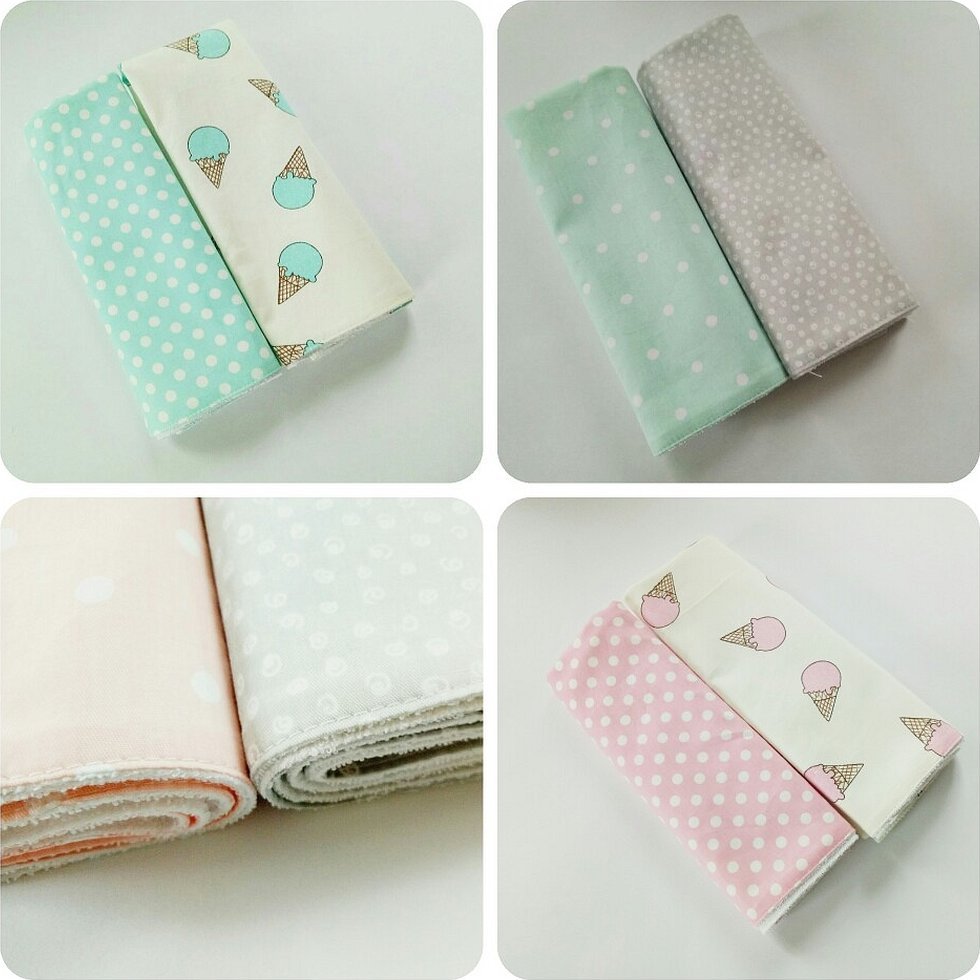
If you make a beautiful finish, then such a product will be a great gift not only for your baby. You can make a christening set using the same principle.
Sliders
To sew "pants" for a newborn, you will have to sweat a little. In order not to make a mistake, the best option would be a pattern of rompers for a newborn in full size. It is not difficult to do this, since the parameters of the baby are not that big.
Rompers for newborns, the pattern with the sizes of which assumes the following actions:
- Take the necessary measurements. Circumference: hips, waist; determine the length of the leg, width and length of the foot; determine the distance from the tip of the big toe to the highest point of the instep.
- Transfer all parameters to the drawing paper. Make a sketch of the pants taking into account the expansion towards the bottom (taking into account the rise). The foot detail is drawn separately.
- Place the cut out paper pieces on the fabric. Secure them with pins. Trace the contours, taking into account the seam allowance.
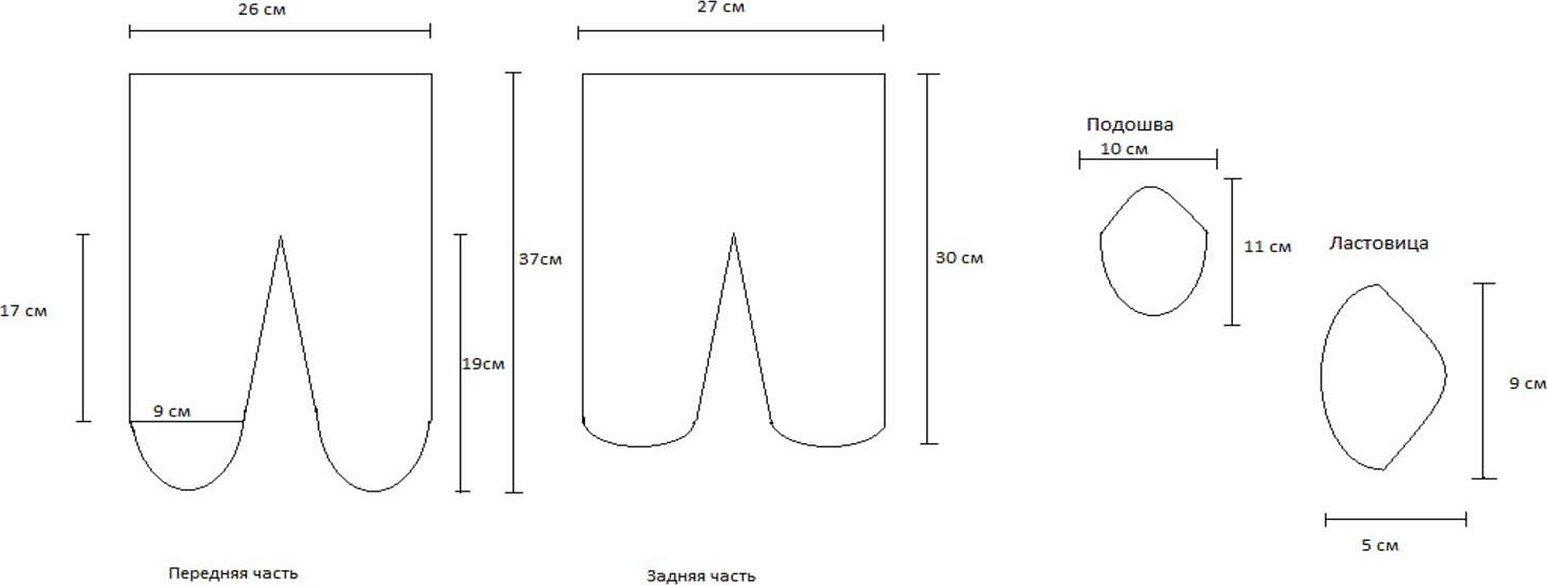
Important! It is better to make such a pattern so that the thing consists of as few separate parts as possible. This will improve the quality of wearing the rompers.
- Cut out the textile blanks. Sew the parts together. But first, make a mark to get an approximate sample of the model.
To ensure that the romper stays in place well, you need to form an elastic band. Additional, decorative trim can also be used.
Scratches
Scratches are an integral part of a newborn's wardrobe. You can sew them in a few hours without using special equipment:
- Measure the length and width of your palm.
- From the same color jersey, cut out 4 pieces that look like an oval with a larger diameter = the length of the palm.
- Cut off the tops.
- Make strips from the elastic jersey that will serve as fasteners for the product.
- Sew all the elements. First, connect 2 ovals, which are then sewn to the elastic.
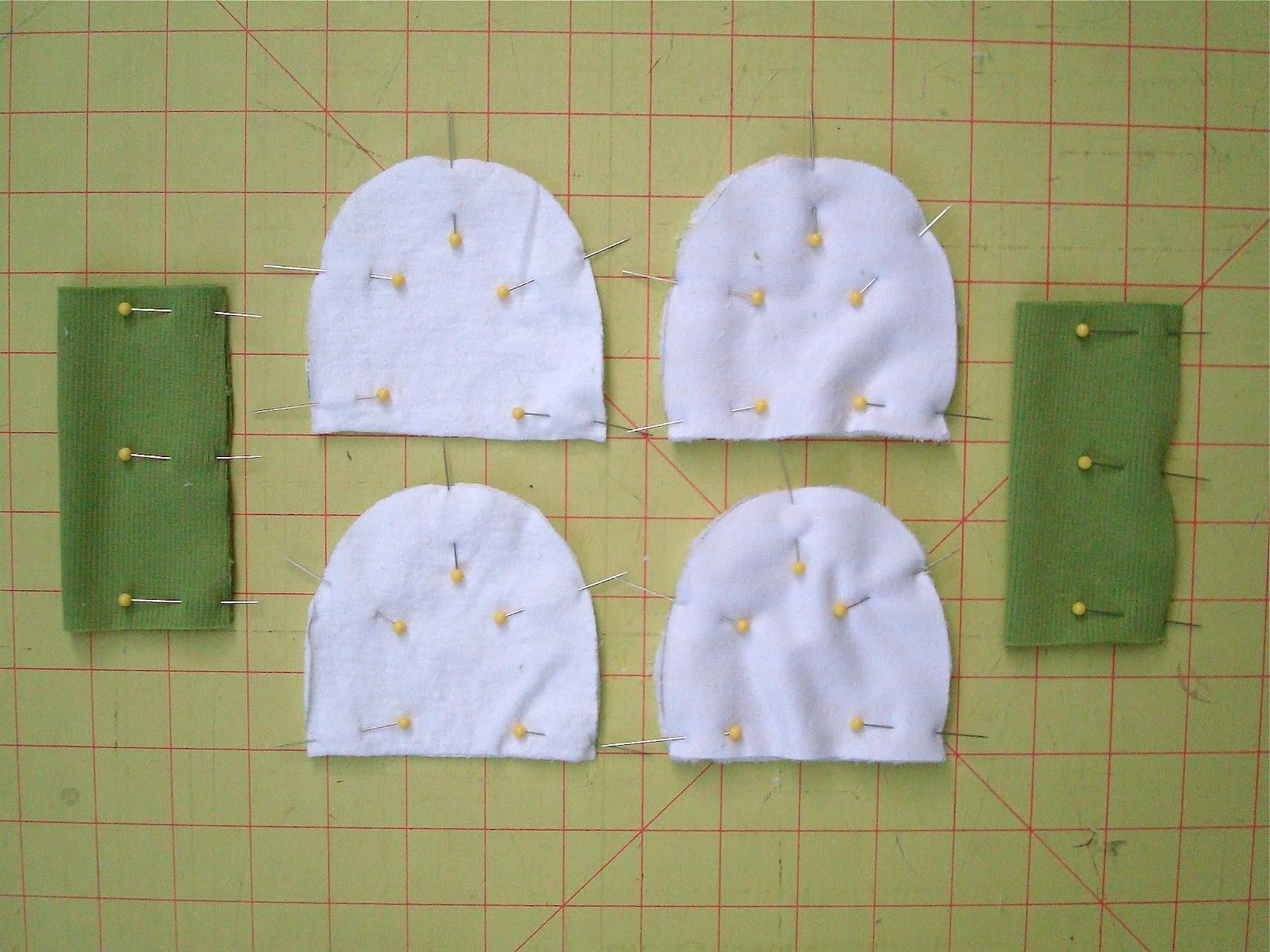
This results in comfortable, functional and reliable scratchers.
Bib-bib
To sew a bib, you need to prepare the following tools and materials:
- Fabric that definitely contains synthetic fibers. This improves the material's cleaning properties.
- Paper, safety pins, pencil, chalk, scissors, needle and thread.
- Measuring tape for determining product parameters.
- Button.
- Sewing machine.
- Iron.
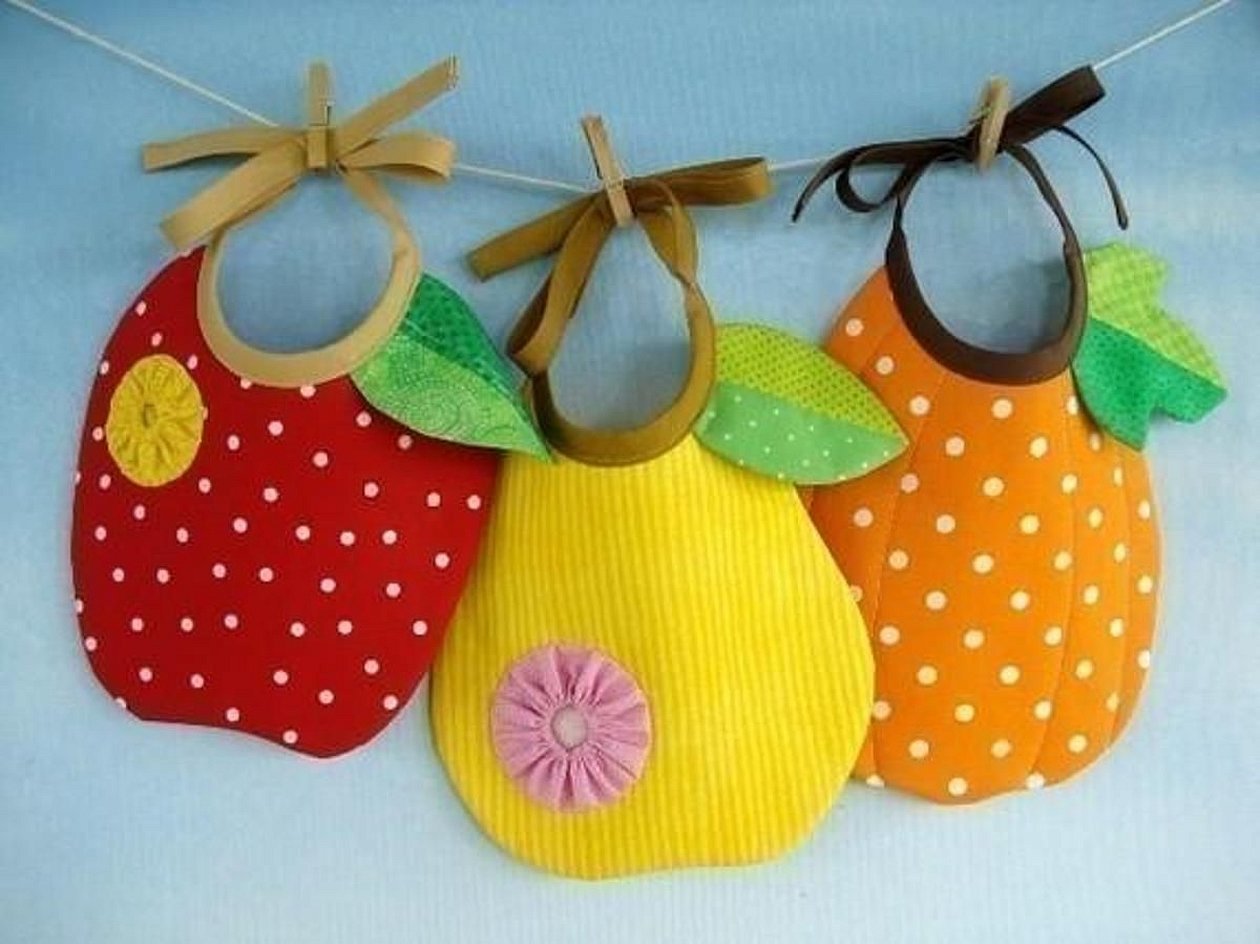
Technology of making a chest bib:
- First, take measurements. It is enough to measure the width of the chest in front, the length will be determined from the navel to the gray shoulder. You will need the neck circumference.
- Transfer all the parameters onto paper and make a sketch of the bib.
- Cut out the blank. Lay it out on the fabric and secure it with safety pins.
- Trace the paper shape with a small allowance, which will be used for overcasting the edges.
- Cut out a blank from the fabric. The edges of the cuts can be folded and overcast by hand or without turning, do it with a machine.
- Sew this fitting on the part where the button will be fixed to secure the product. Form a loop on the base fabric.
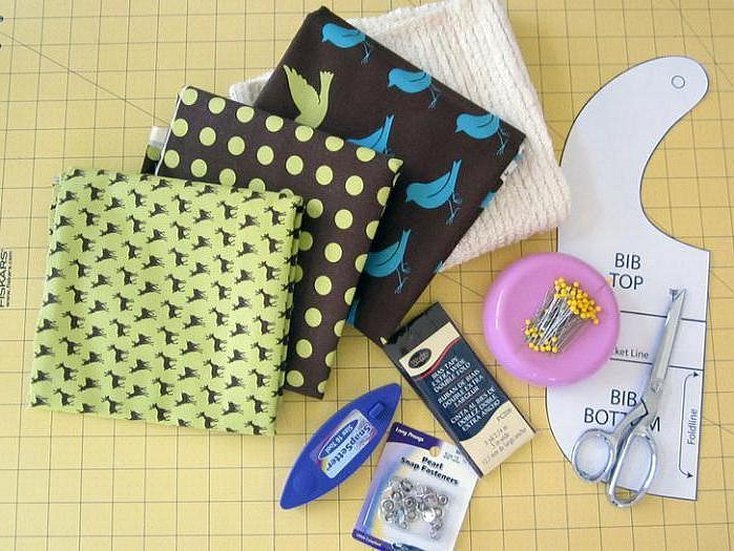
You can decorate the product by making an applique from fabric. If it is a girl, then the decoration is done with bright decorative elements. More restrained motives will suit boys. You can make a simple metric. For example, for a girl, embroider a name - Maya, Masha, Katya and other names.
The benefits of making your own clothes
Before deciding to make clothes themselves, many mothers weigh all the pros and cons. Making clothes for babies is not only interesting and easy, but also useful. The advantages of such products are the following factors:
- By choosing the simplest patterns, even a beginner can cope with the work, creating unique items in a single copy. It turns out that the item is completely designer.
- Only high-quality materials will be used for production.
- You can choose any color scheme and create a unique finish.
- The sizes may be non-standard, as the pattern is made independently.
- In addition to clothes, you can make other items for your baby, which can also additionally decorate your home.
- Thanks to original combinations and experiments, you can create truly universal items.
- This skill can become the basis of a business for a mother on maternity leave, since each item will be non-standard.
Sewing clothes and products for newborns on your own is not difficult if you do everything correctly and carefully.
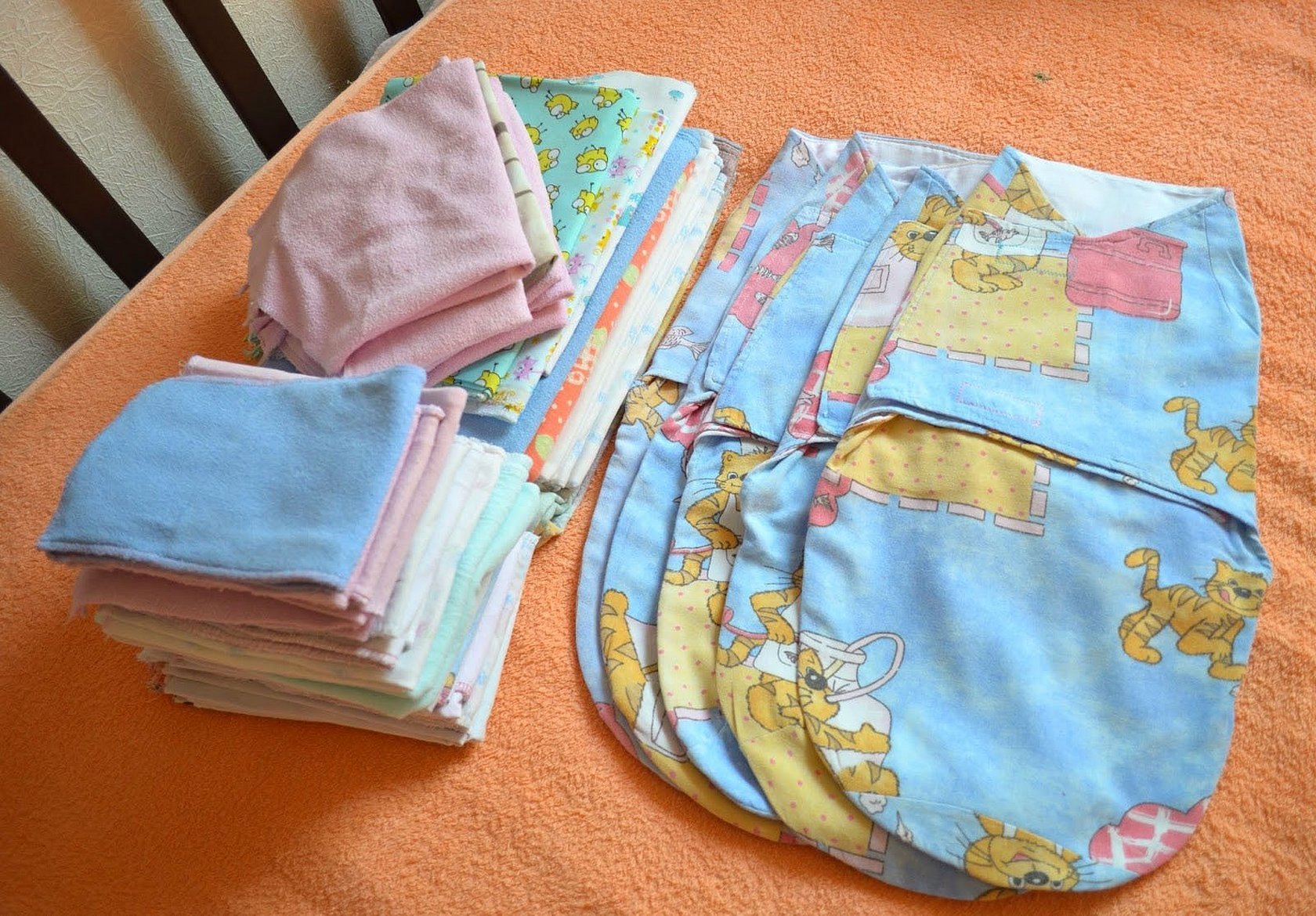
Every year fashion brings new variants of models not only for an adult wardrobe, but also for children. Many things can be brought to life independently - sew things yourself, and not only things. In order for everything to work out, you need to correctly remove the marks from the newborn, prepare a pattern. The work itself will not take much time, but will definitely bring a lot of pleasure. Moreover, when designing things, you can show your imagination and choose the materials you like.




